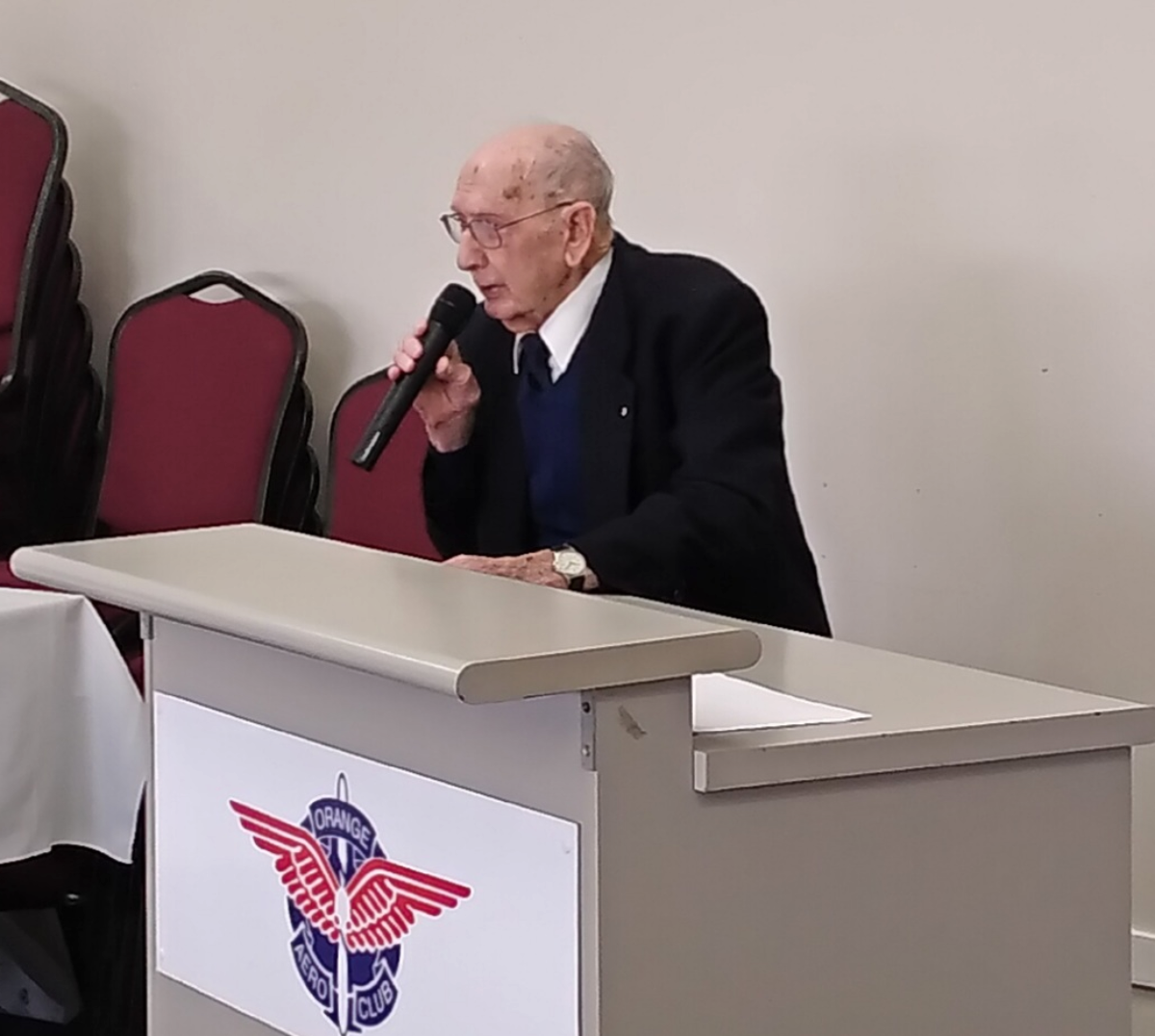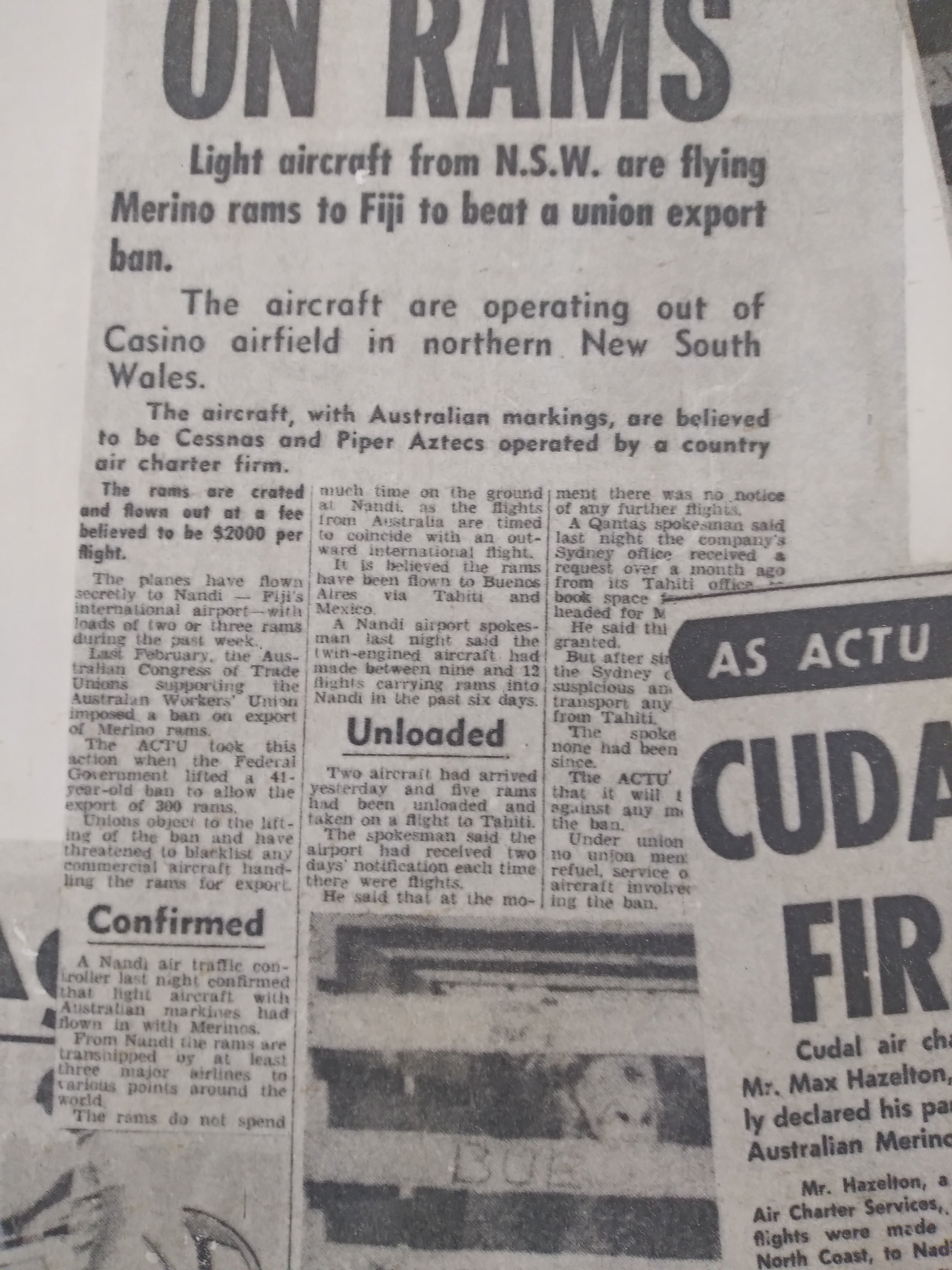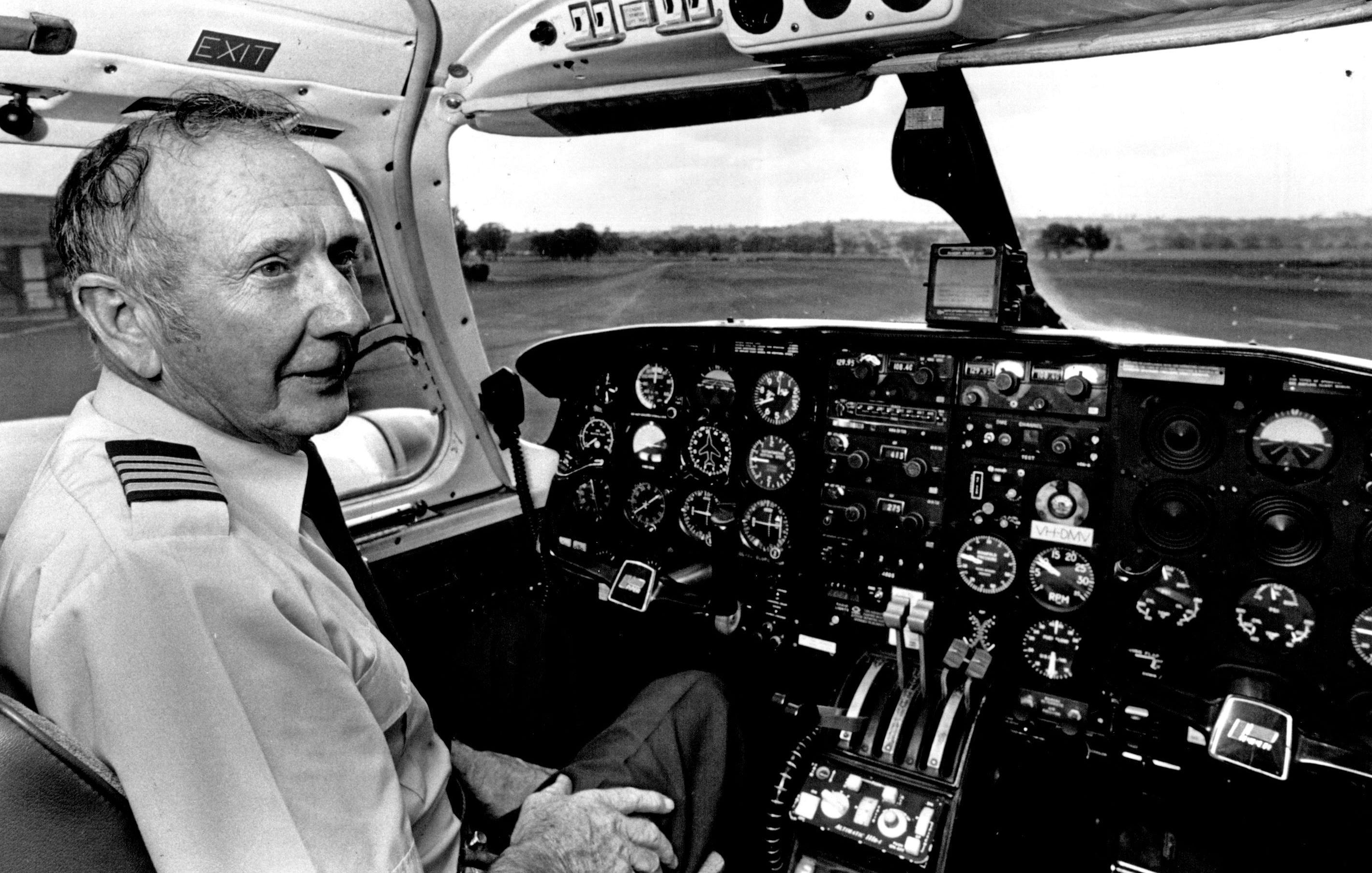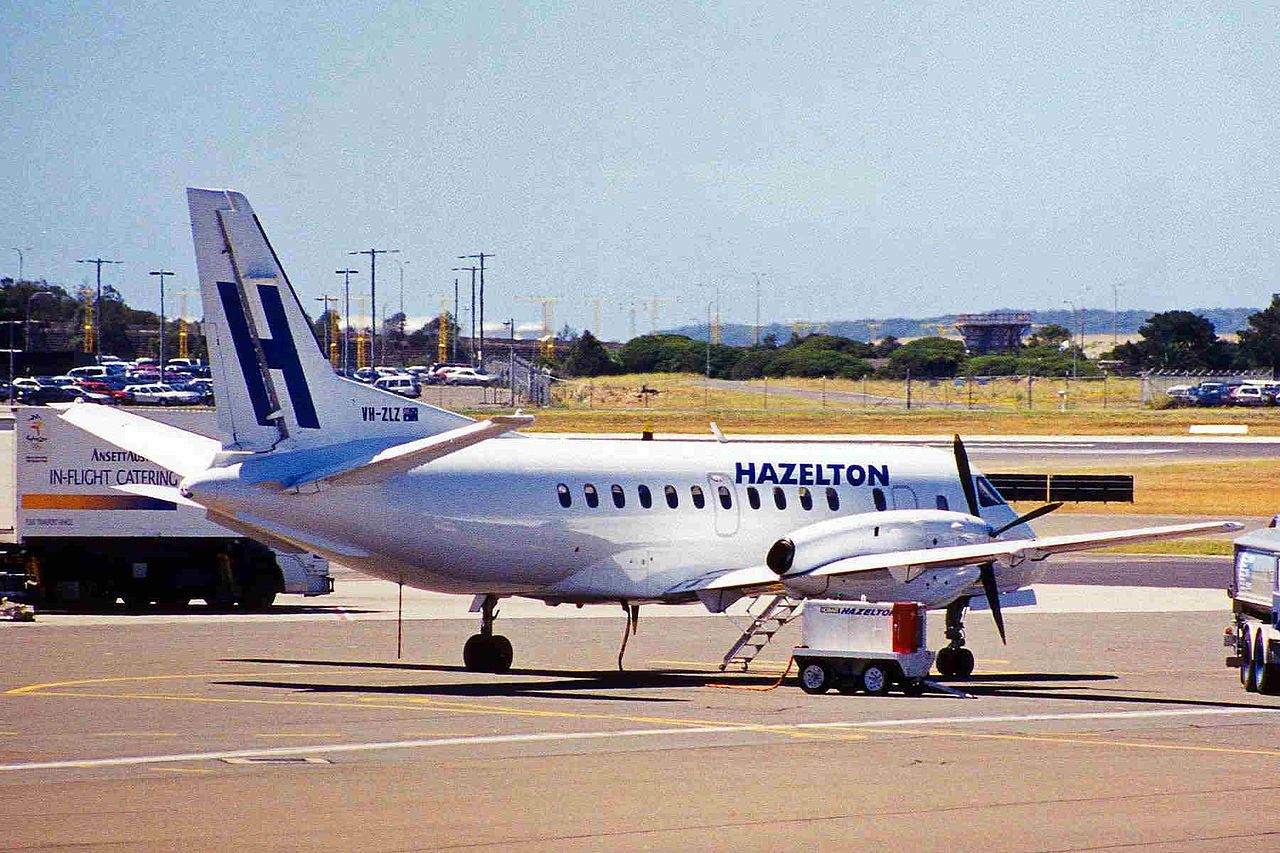There are not many old-school aviation pioneers left, but Max Hazelton is one of them. The 95-year-old, who lives in a country town four hours drive west of Sydney, founded a rural airline that's become Regional Express (Rex). Along the way, spurred by a healthy disregard for rules that didn't suit him, Max helped pave the way for Australia's contemporary aviation landscape and had adventures you wouldn't stand a chance of getting away with in 2022.
Sorting fact from fiction
At Max's recent birthday bash, appropriately held at an airport, people who knew him talked about what he's done and gotten away with over the years. Sometimes it is hard to work out what is simply a tall tale or what's true - or at least partly true. But one story from about 50 years ago caught our ear. Sure, there are newspaper clippings to support the story, but more than that - what Max did was so original that you couldn't make it up.
In 1953, Max Hazelton talked his Mum into lending him the then princely sum of £2,500 to buy an Auster J5F Aglet Trainer aircraft. Including the pilot (that was Max), the plane was big enough to fly four people. Max's Mum probably regretted lending him the money because he crashed the plane in the mountains west of Sydney the following year. Max was presumed dead. However, he wandered out of the bush six days later, looking for a phone and a feed. But that's another story. Max got himself another plane and went on to turn Hazelton Airlines into a regional airline powerhouse that eventually was acquired by Ansett Australia and later by the consortium that went on to form Regional Express
Transporting blue-chip genetics was not as easy in 1971 as it is now
Nearly two decades after that crash, Max was going strong and, according to the frequently repeated stories, still ignoring the rules and regulations that didn't suit him, and this brings us to 1971. Max got hooked up in a scheme to fly male sheep (rams) across to Argentina to mate with Argentinian female sheep (ewes). The Australian rams were merinos, a breed that came out to Australia with the first European settlers but had since evolved into a sturdy animal that produced super fine, high-quality, and highly prized wool. The general view in 1971 was that these money-spinning animals should stay in the hands of Australian sheep farmers. The unions shared that view and had a longstanding black ban on exporting the merinos.
But one enterprising Sydney livestock agent had other ideas, and he hatched a plan to fly merino rams to Argentina for breeding (and profit) purposes. But he needed planes, and that's where Max came in. Remember, this was 1971, and AI (that's artificial insemination, not artificial intelligence) was an undeveloped industry. These days you'd slip a straw of frozen A-grade ram sperm into an esky and take it onto a Qantas flight to Santiago as carry-on. Back then, then you had fly the boy to the girl and hope for the best.
The number of rams flown out is uncertain, but the under-the-radar flights went on for months
So Max started airlifting merino rams in lots of up to five out to Fiji or Tahiti (with a New Caledonia fuel stopover along the way) using a Piper Aztec and Cessna 310. He flew them out from a small town called Casino in northern New South Wales. In either Fiji or Tahiti, the rams would be transferred to bigger planes for the last legs to Argentina. In those days, Qantas used to fly from Tahiti to Mexico (the old Fiesta route), and newspaper clippings from the time say Qantas' Tahiti office was, if not complicit in defying unions bans, at least aware of the ram running and "handling inquiries."
Getting a handle on exactly how many rams Max smuggled out of Australia in 1971 is tricky. Max declined to say but said the flights went on for several months. Fijian media at the time reported Max operated up to a dozen flights into Nadi Airport over a week and that Max was clipping the Sydney livestock agent $2,000 a trip, or $24,000 for those dozen flights - not a bad earn for a week's work in 1971. The several months the flights operated for indicate Max flew quite a few merinos out and did well out of it.
It's a fair flight from Casino to Fiji in a small plane. I like to think of the stench inside that plane with live sheep inside, given that your average fertile ram has no sense of decorum - he'll poo and wee everywhere, anytime. Open what windows you can and hope for the best, but Max would have had to break out some high-grade carpet cleaner and deodorizer when he got home.
The Australian Government turned cleared flights but the unions were furious
The Australian Government knew what was going on (this happened during the dying days of the anti-union McMahon Liberal Government) and cleared the flights. Max also claimed the unions knew what was going on at the time and didn't care. That's not entirely correct. When the unions did later become aware of what was going on, they jumped into action, leaning on Transport Workers' Union members in Casino to prevent the rams from boarding.
Australia was still highly unionized and protectionist leaning at the time, so defying union bans, if not illegal, generally didn't prove popular with the public. To rub salt into the wound, it wasn't some lousy foreign sheep breed slipping out of the country, they were merinos - Australia's woolly pride and joy. President of the Australian Council of Trade Unions, Bob Hawke, was furious and publicly denounced Max. In a nice piece of irony, Mr Hawke would go on to become one of Australia's greatest reformist prime ministers. At the time, he was a hard-drinking rabble-rousing protectionist-leaning union leader.
Stay informed: Sign up for our daily and weekly aviation news digests.
Flying you wouldn't get away with in 2022
But by then, it was all too late. The undercover merino airlift was successfully completed, thanks to Max. Some of Australia's finest male exports went on to impregnate approximately 100,000 Argentinian lady sheep and spread their genes. They remind me of Australian backpackers. Max took some flack in the media for his effort, but he said it was simply business and rejected the criticism. He banked his cheques from the livestock agent and went back to central west New South Wales, again putting two-legged passengers into his (presumably cleaned) planes.
At Max's recent 95th birthday, Rex's Deputy Chairman John Sharp spoke approvingly of the way Max repeatedly defied convention over his career. John Sharp's approval of Max's antics five decades down the track amuses me because John is a former Australian Government Transport Minister and National Party member and would have given a sheep-running airline buccaneer like Max Hazelton short shrift while in office. Luckily for both of them, Max had morphed into a relatively conventional rule-abiding airline executive by the time John assumed office.
Rex styles itself a country airline, although its head office and main hub are now in Sydney, and the airline is increasingly preoccupied with busy intercity trunk routes. But it's a nice touch that Rex reaches back into its history to celebrate old aviation characters like Max and his adventures. And in an era when you can't look sideways without signed approval from someone, it's good to mark a time when flying was a little looser.





